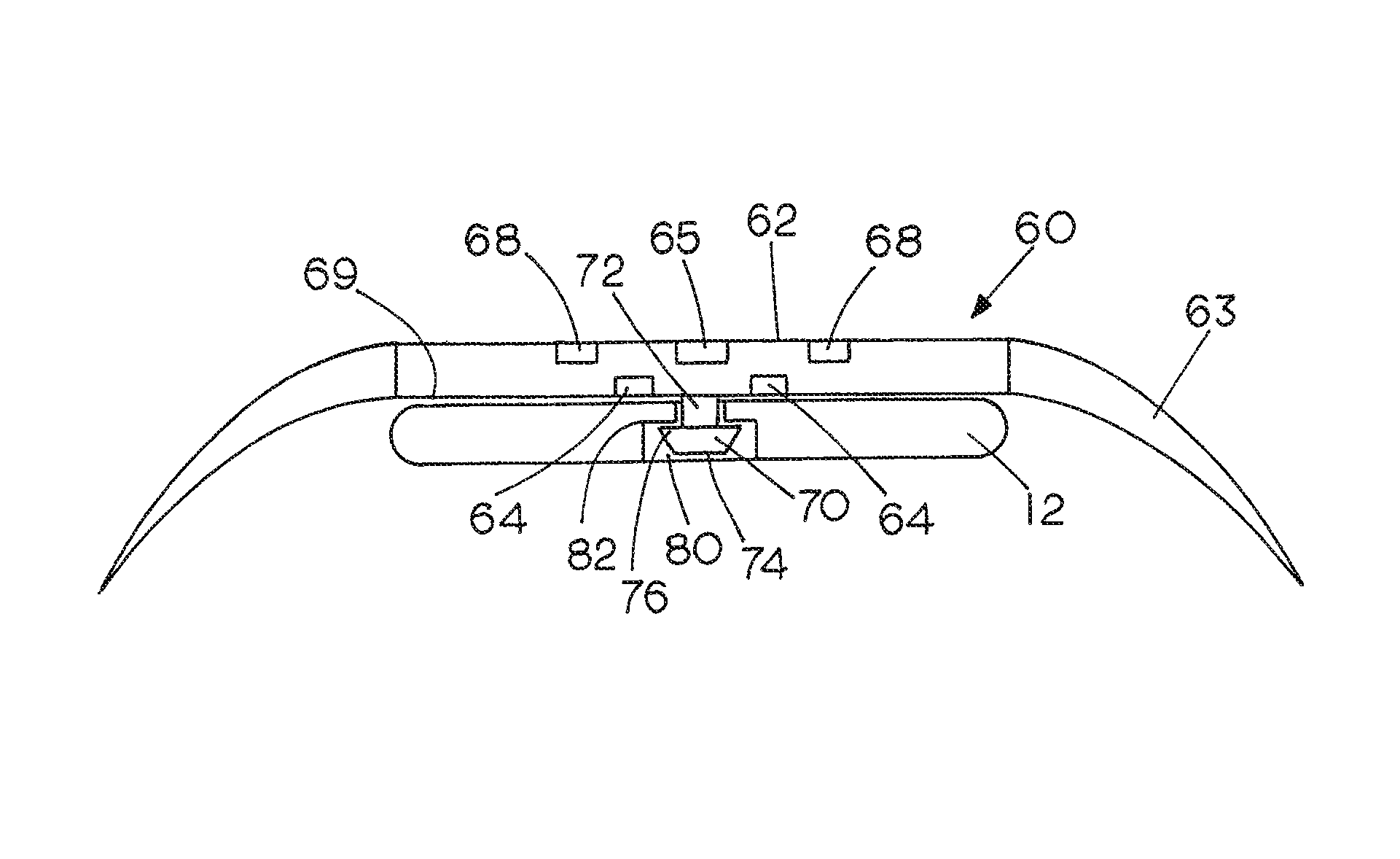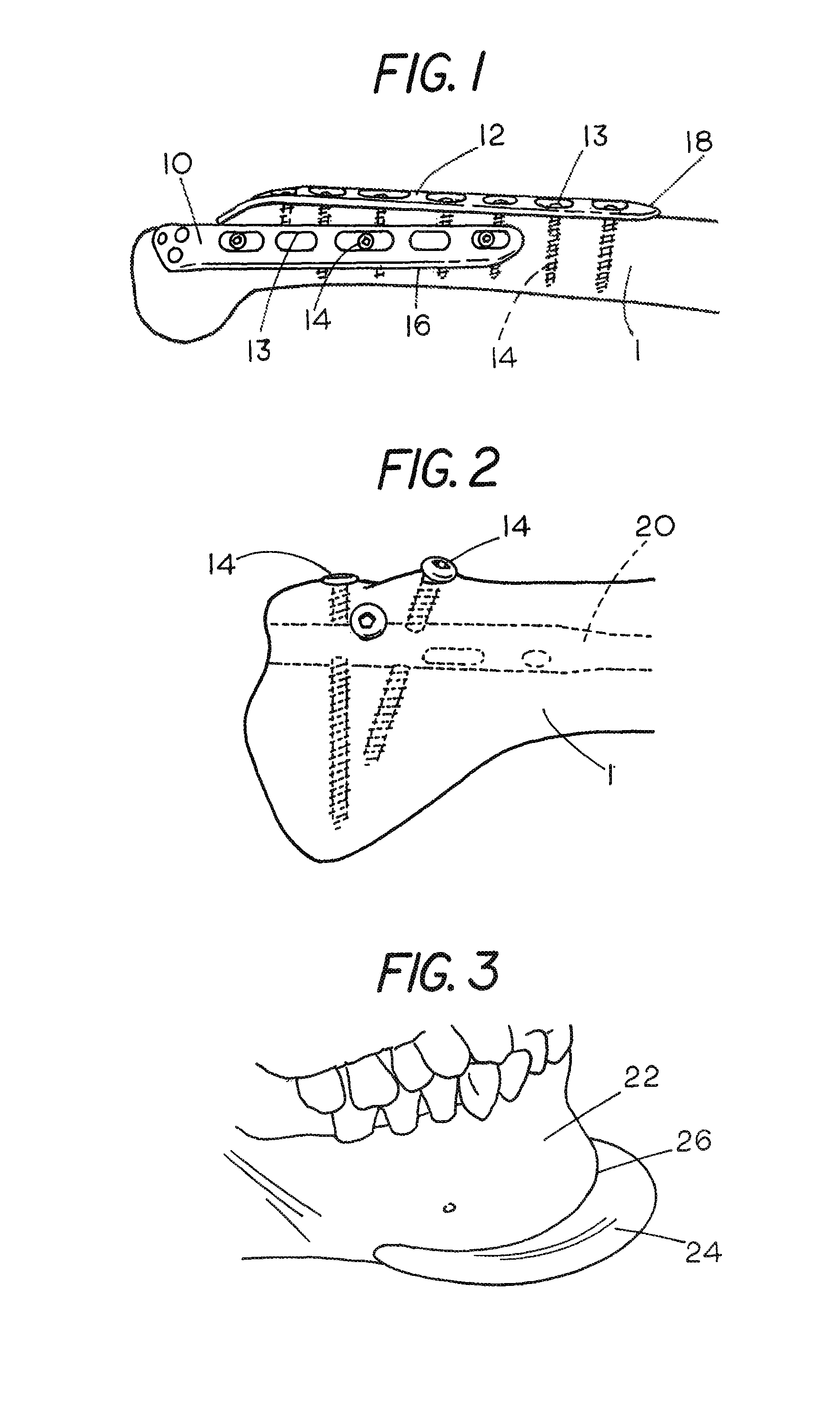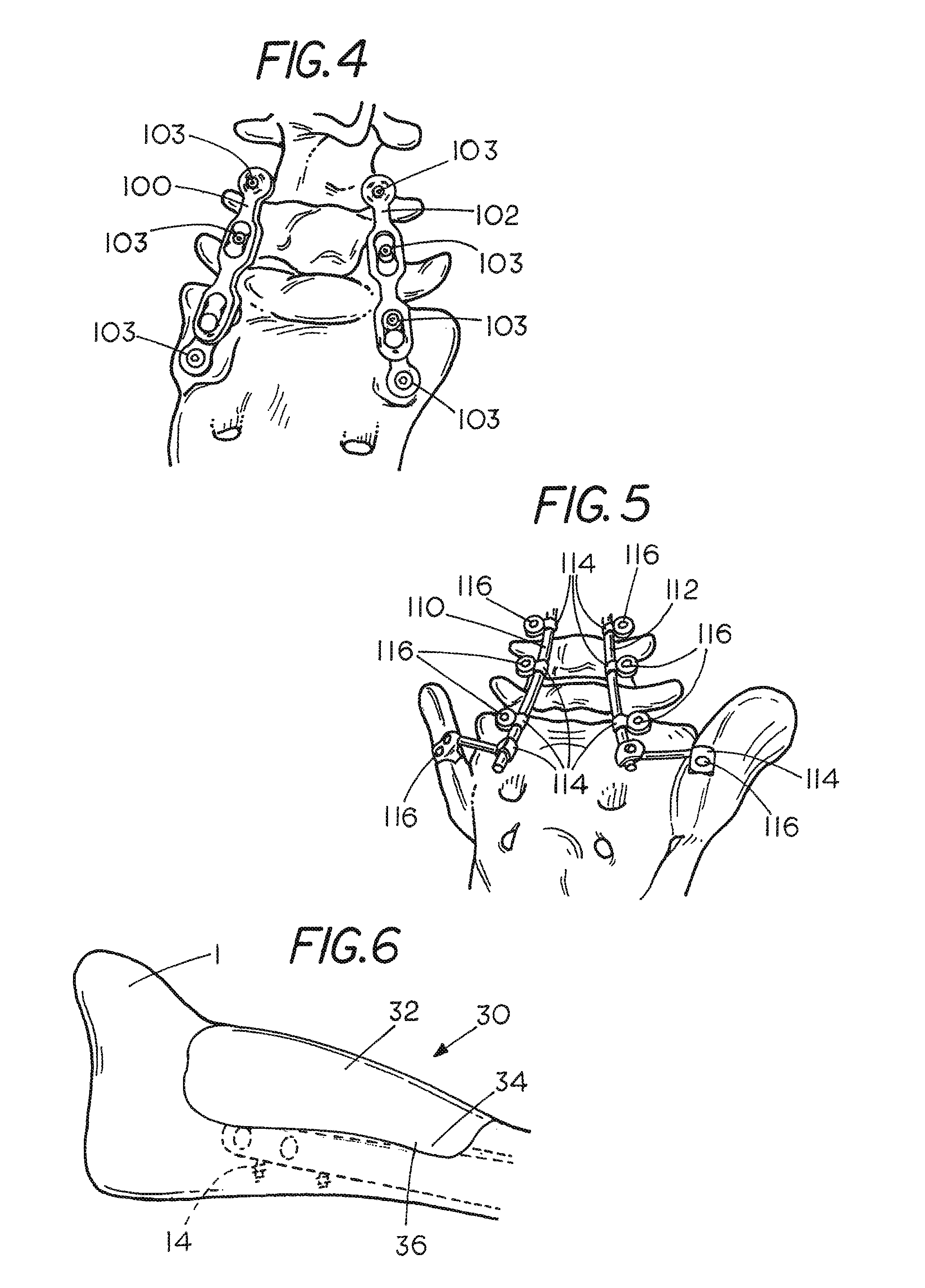Moldable cushion for implants
a cushion and implant technology, applied in the field of implants, can solve the problems of patients' discomfort at the bone-implant interface, limited ability of metal implants to match the contour of the underlying bone, and often the site of step-off, so as to facilitate and secure seat the cushion, reduce friction between the surfaces, and minimize discomfort and the risk of irritation, injury or infection
- Summary
- Abstract
- Description
- Claims
- Application Information
AI Technical Summary
Benefits of technology
Problems solved by technology
Method used
Image
Examples
Embodiment Construction
[0032]FIGS. 1-5 show representative examples of the types of implants employed by surgeons today. FIG. 1 shows a bone 1 which has been fractured and a pair of orthopedic implant plates 10 and 12 employed for fixation of the fracture. Each plate has a plurality of holes 13 surrounded by a recessed flange. The plates are made of a suitable metal such as titanium. Screws 14 are used to fasten the plates 10 and 12 to the bone 1. The screws 14 include a threaded shaft having a diameter smaller than the hole 13 and a head which engages the recessed flange surrounding the hole 13 to fix the plate 10 or 12 to the bone 1. The bone-implant step-off associated with plate 10 is shown at 16. The bone-implant step-off associated with plate 12 is shown at 18. As shown, the shape of each of plates 10 and 12 has been modified to match the contours of the bone 1 and provide a proper alignment between the bone fragments on opposite sides of the fracture.
[0033]FIG. 2 shows a rod 20 which has been place...
PUM
 Login to View More
Login to View More Abstract
Description
Claims
Application Information
 Login to View More
Login to View More - R&D
- Intellectual Property
- Life Sciences
- Materials
- Tech Scout
- Unparalleled Data Quality
- Higher Quality Content
- 60% Fewer Hallucinations
Browse by: Latest US Patents, China's latest patents, Technical Efficacy Thesaurus, Application Domain, Technology Topic, Popular Technical Reports.
© 2025 PatSnap. All rights reserved.Legal|Privacy policy|Modern Slavery Act Transparency Statement|Sitemap|About US| Contact US: help@patsnap.com



